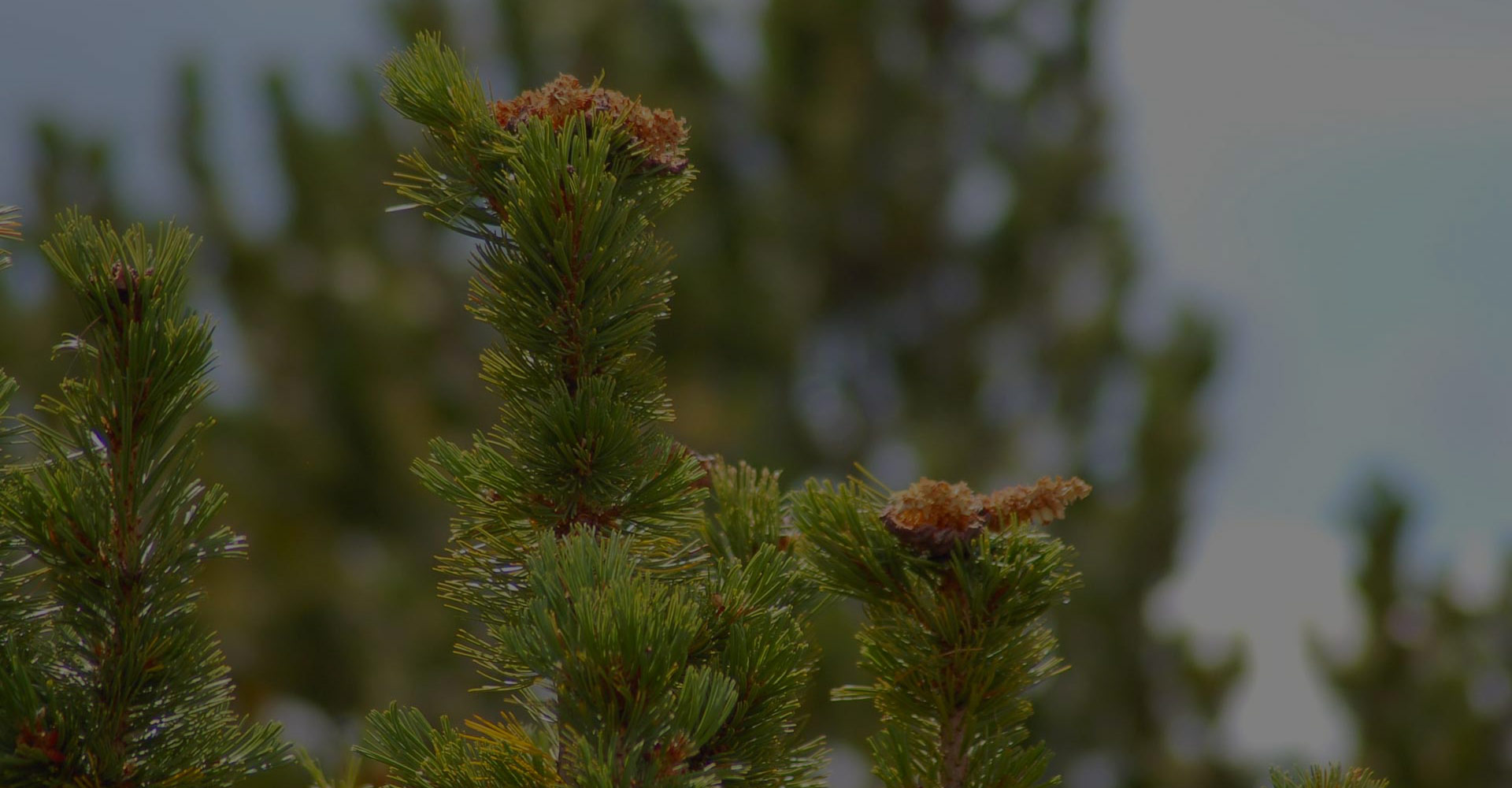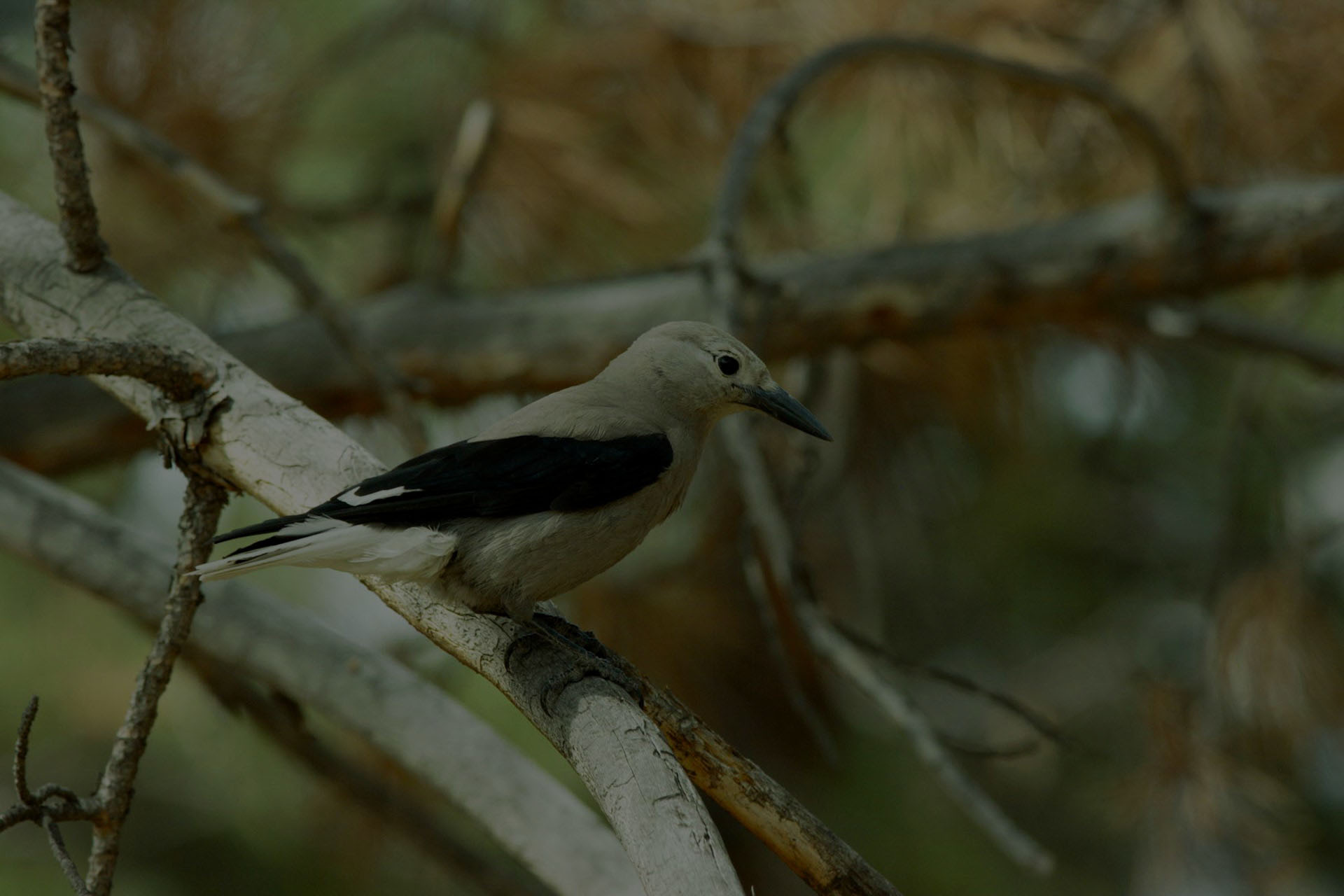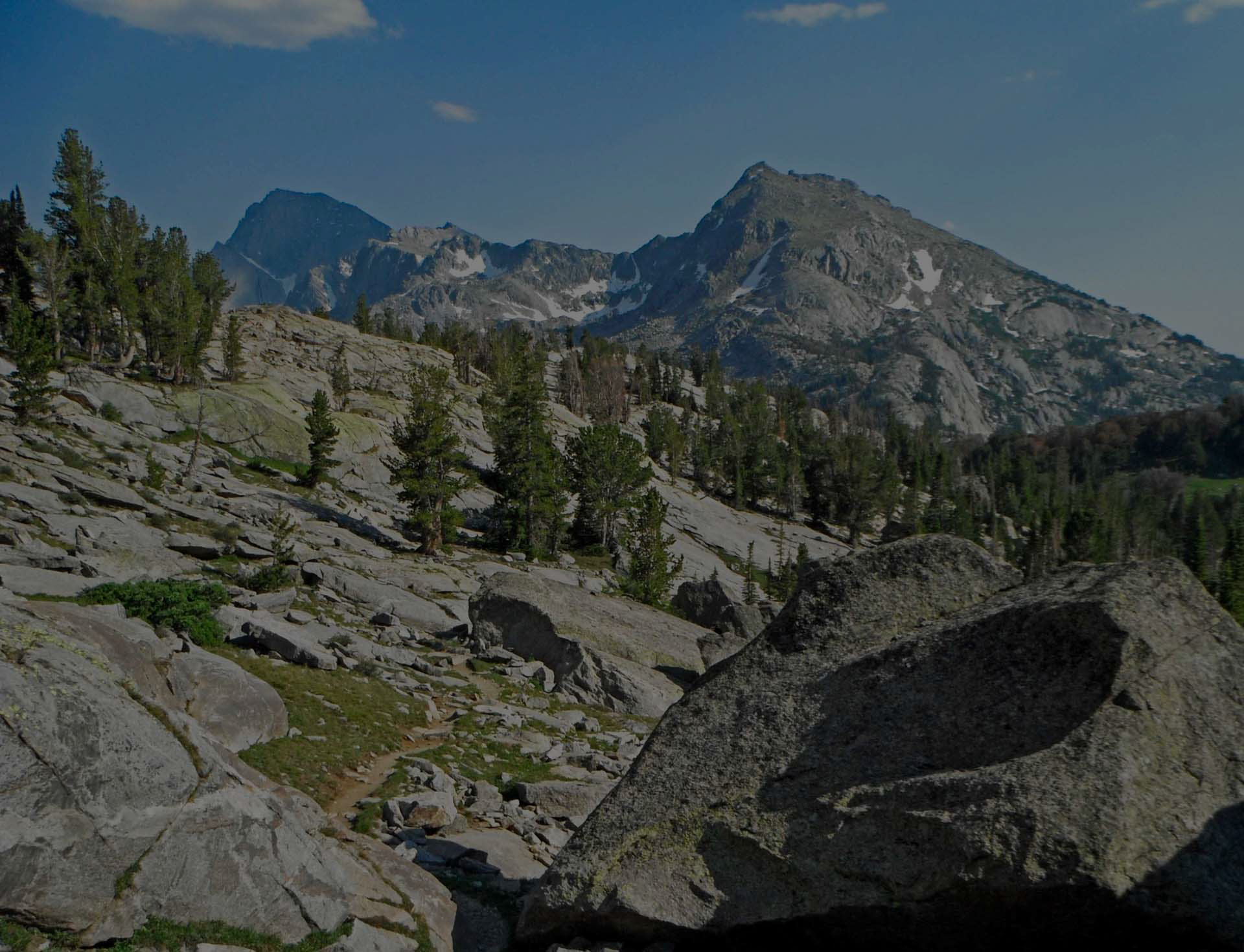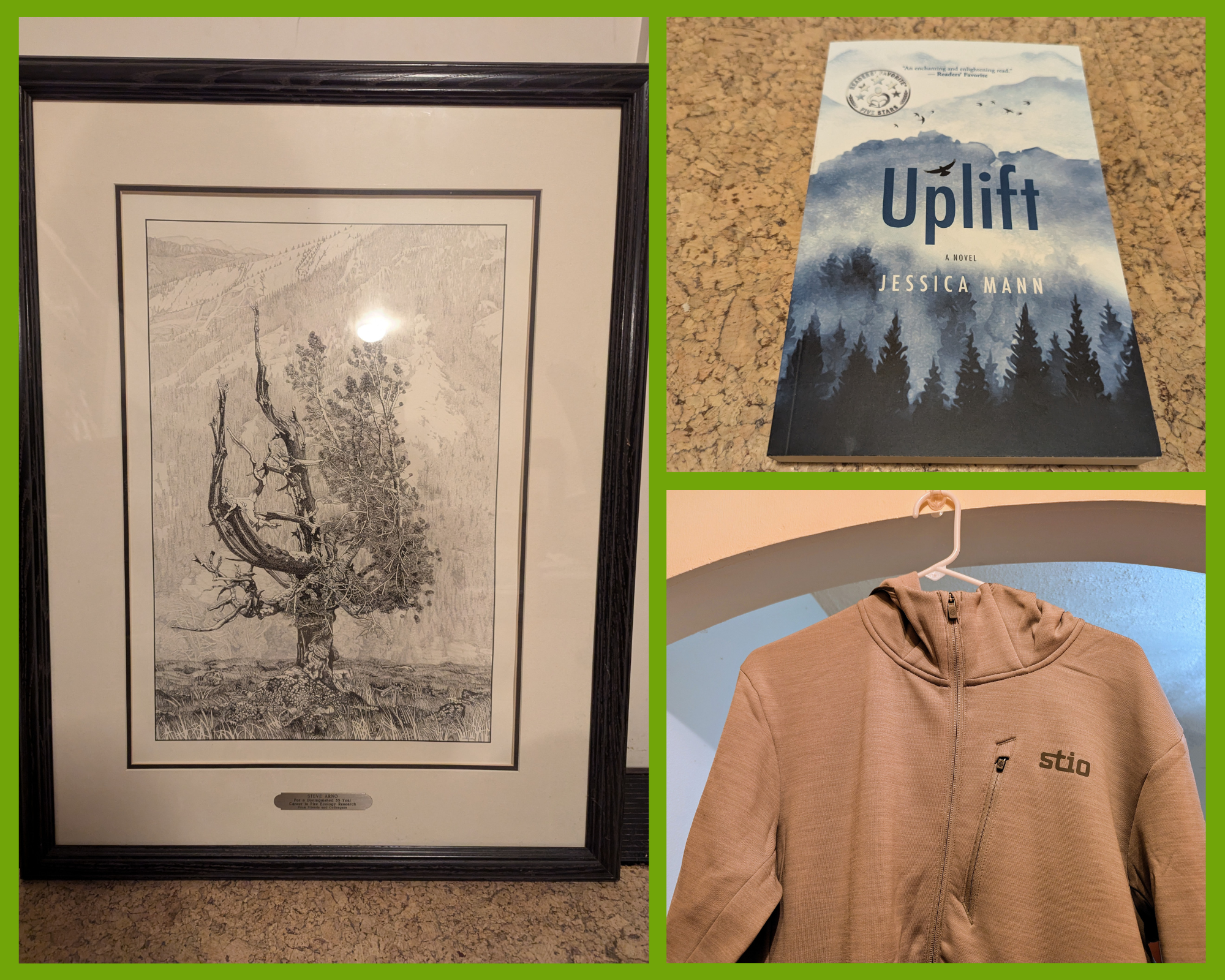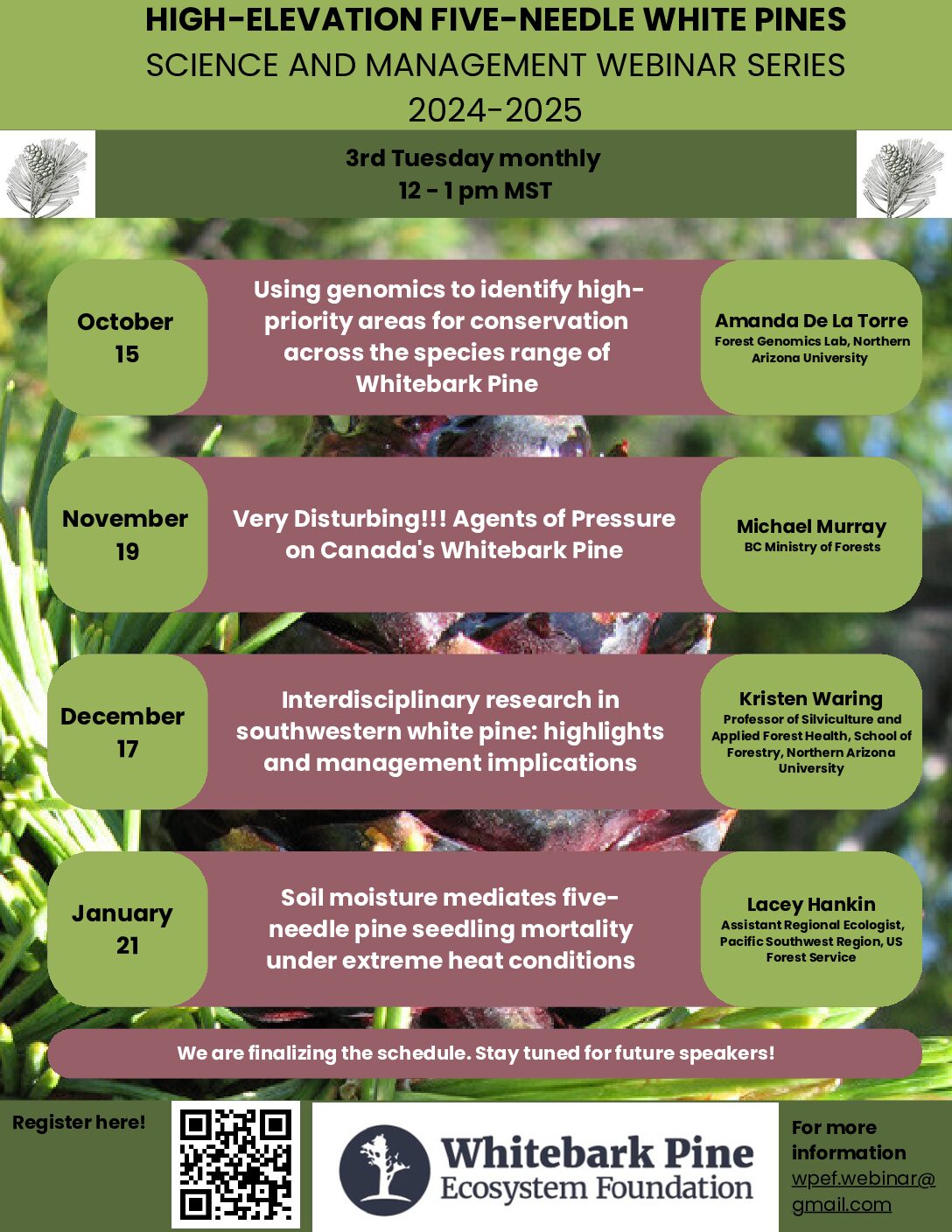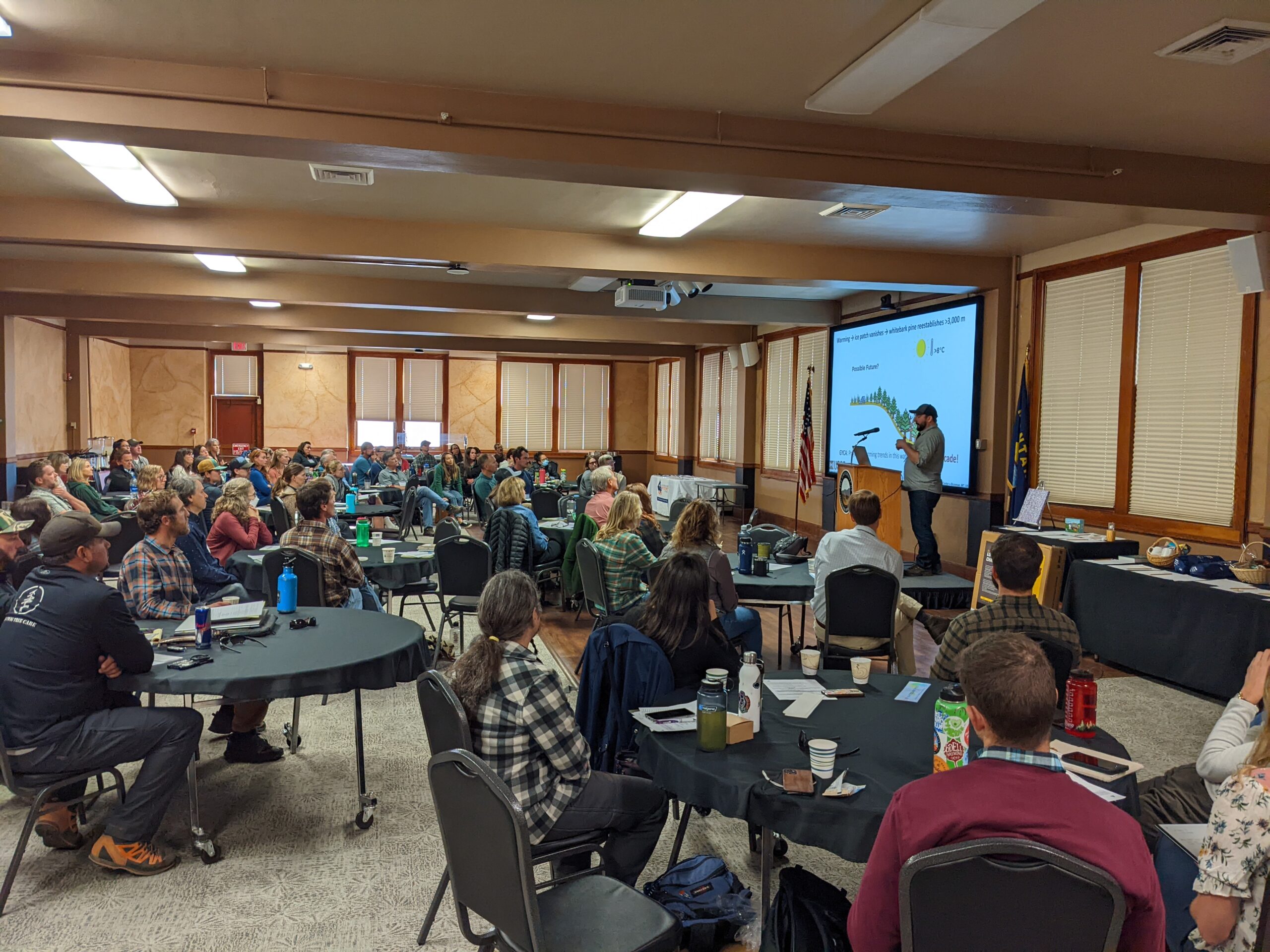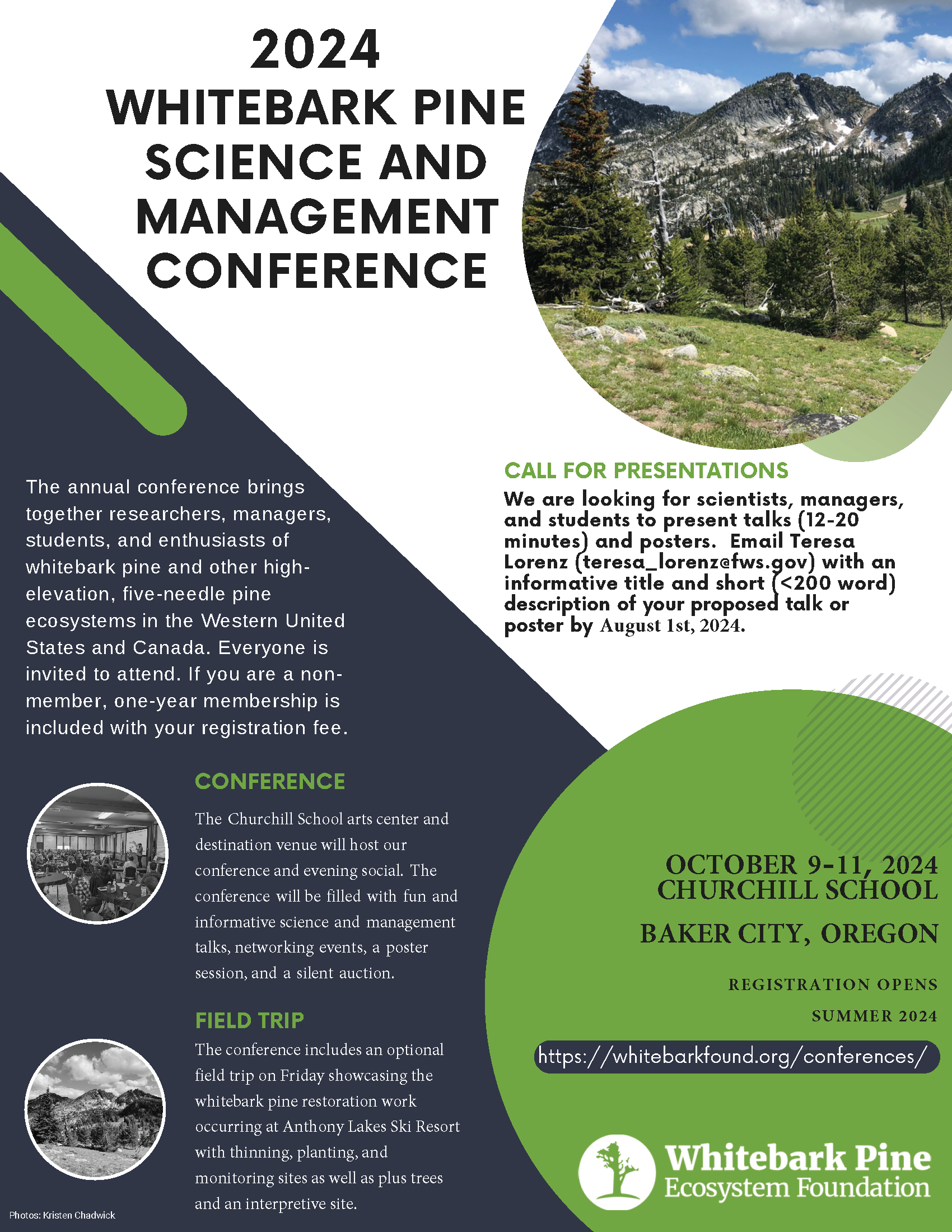Whitebark Pine Matters
Walking through a pine forest in early fall, it is impossible not to feel a sense of awe. Clark’s nutcrackers noisily harvest seeds from deep purple cones that protrude outward from the upswept branches of majestic whitebark pines, their occasional noisy “kraa-kraa” resounds through the forest. Golden sunlight lights up drops of resin clinging to the cones. Whitebark pine stands are a part of some of the most beautiful high mountain landscapes in North America. In fall, these stands come alive with movement: Chickadees and nuthatches, woodpeckers and finches visit partly-opened cones; pine squirrels diligently cut down cones for their winter stores, and chipmunks climb about the canopy, competing with birds and squirrels for access to cones.
Now, however, for many visitors to whitebark’s habitat, awe is tempered by alarm and sadness. These majestic pines are in peril; trees with reddening dead foliage or lifeless grey skeletons replace the greenery and squirrel and nutcracker activity.
National Whitebark Pine Restoration Plan
Whitebark pine has the largest distribution of any five-needle white pine in North America, but whitebark pine health is deteriorating rapidly across its range, particularly in the Rocky Mountains, Pacific Northwest, and northern Sierra Nevada. The widespread decline in whitebark pine from an unprecedented combination of threats requires timely management intervention.
Latest News
2024 Conference Donors
We sincerely appreciate all the donations made to this year's...
2024-25 Webinar Series
High-Elevation Five-Needle White Pines: 2024-2025 Science and Management Webinar Series The...
Whitebark Management Workshops
New Workshops at this year’s Whitebark Pine Science and Management...
Registration Open for 2024 Whitebark Pine Conference
Registration is now open for the 2024 Whitebark Pine Science...
Conference Information
Each year, WPEF sponsors a one-day conference to showcase the latest research and management activities in high elevation pine restoration, especially whitebark pine. WPEF’s annual gatherings are an opportunity to increase awareness and understanding of all high elevation pines.


